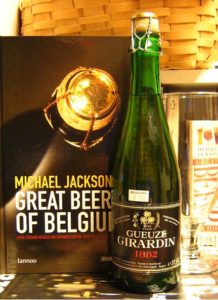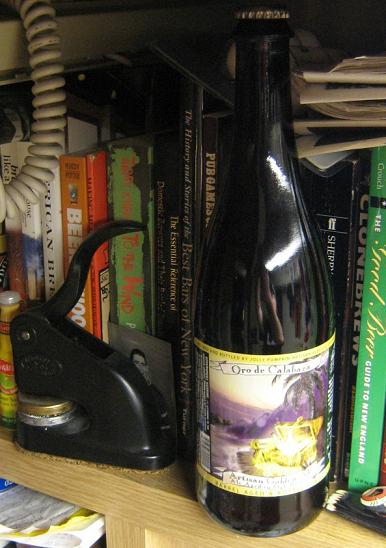 Click any picture for a bigger view.
Click any picture for a bigger view. It was a Ron-a-thon last Friday at
Jolly Pumpkin. After leaving London, Ontario, Canada at about 1 pm and we hit Dexter, Michigan at about 5 pm just as Ron Jeffries was finishing up a days work. He gave me an hour of his time and by the end of it I was thinking this had been one of the most intense hours of beer I have had without taking a drink. Being the doe-eyed schoolgirl that I was, perhaps a bit like
Ron in Bamburg, in awe of the moment of course I did not take notes until I got to our hotel in Ann Arbor. But I did get a brain full.
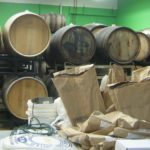

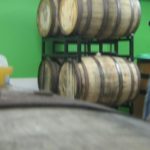
Barrels everywhere. Everything is aged in oak. Barrels from bourbon and brandy distillers. Barrels from Firestone and other brewers seeking vanilla where Ron seeks tang. A 2000 litre barrel newly in from France. Being in a room full of barrels of beer is an interesting experience. The feeling was much more like cheese making than other brewers with their steel conical fermenters and bright tanks. These was life around me and it was asleep, seeking slow funkiness. Lame? Deal with it.

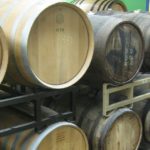
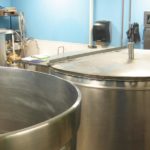
I got an education. While Michigan has twice the brewers of Ohio, it has only 1% of the state’s market, compared to 6% nationwide. This means brewers have to seek markets out of state. I was happy to do my bit and introduce Ontario importers Roland and Russell to Jolly Pumpkin as was announced on Monday. Ron apologized when he explained the price would be high but I had to assure him that ten bucks for a 750 ml of some of the most thoughtful ale made on the continent was quite reasonable given what else we have to put up with.

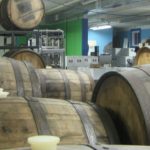
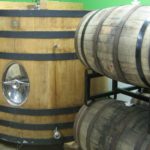
Ron makes beers unlike others. Beers that have the dryness of oak with less of the vanilla than others impart. There is a lambic, the only true one in North America, that has been three years in the wood soon to be released on a six month cycle. When I asked about the source of the wild yeast strains, Ron said the make of Cantillon told him you can make lambic anywhere. I have particularly liked the Bam and Bam Noire which I think are up for the CAMWA beers of the year award for 2007. I did, by the way, share the concept of CAMWA and think it is now Jolly Pumpkin approved. They have done well with 50% expansion in each of the first two years and 30% for both 2006 and 2007.
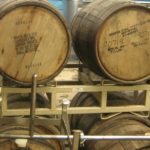
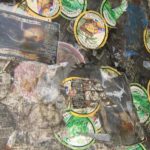

The hour flew by and the generosity shared was quite the thing. We took a case of large format beers for just around 75 bucks and others to spare as well. Likely the best value in beverage that I can think of. A couple of hints. Ron recommends, as they age, chilling the beers before opening as they create be quite the fountain. I recommend leaving them to get to that age to get to this state as time enhances their complexity to a degree I have not experienced before with beer.

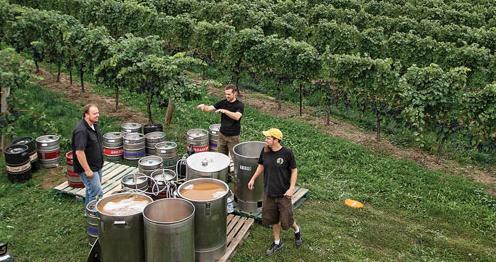

 The trouble with charcoal grilling is that when the rain comes you can’t turn it off. Propane, on the other hand, has a nice dial that has a “0” setting. But there is the garden shed and, when it rains and you have visitors, it can turn out to be a delightful place to while away a late afternoon hour reading last week’s newspapers in the recycling bin, listening to AM radio and comparing a few examples of bieres de garde and saisons.
The trouble with charcoal grilling is that when the rain comes you can’t turn it off. Propane, on the other hand, has a nice dial that has a “0” setting. But there is the garden shed and, when it rains and you have visitors, it can turn out to be a delightful place to while away a late afternoon hour reading last week’s newspapers in the recycling bin, listening to AM radio and comparing a few examples of bieres de garde and saisons.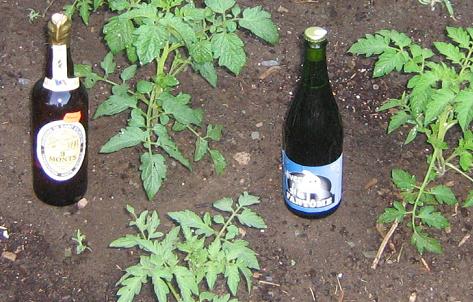
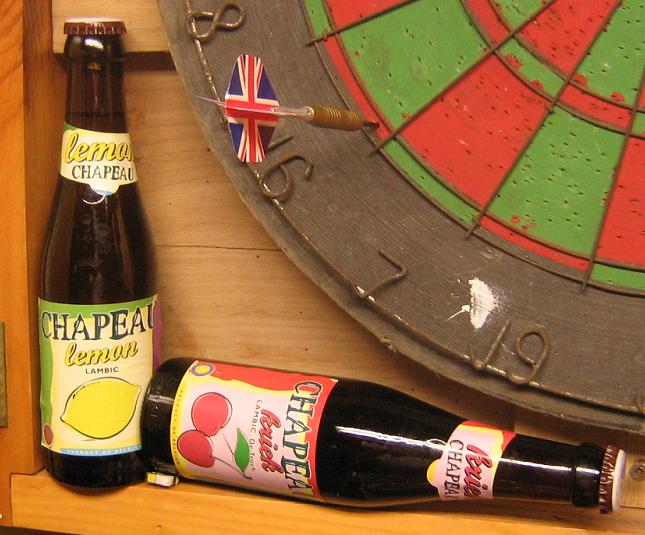
 Here is a hint when you are traveling. If, after a tiring 600 km drive (to be followed the next day by another 600 km drive) you notice contract street sweeping equipment in the parking lot, get a new hotel. Street sweepers come and go in the night, you see. After idling their massive engines for fifteen minutes or so. It was like sleeping in a public works depot.
Here is a hint when you are traveling. If, after a tiring 600 km drive (to be followed the next day by another 600 km drive) you notice contract street sweeping equipment in the parking lot, get a new hotel. Street sweepers come and go in the night, you see. After idling their massive engines for fifteen minutes or so. It was like sleeping in a public works depot.
